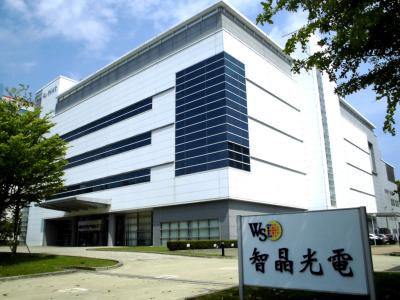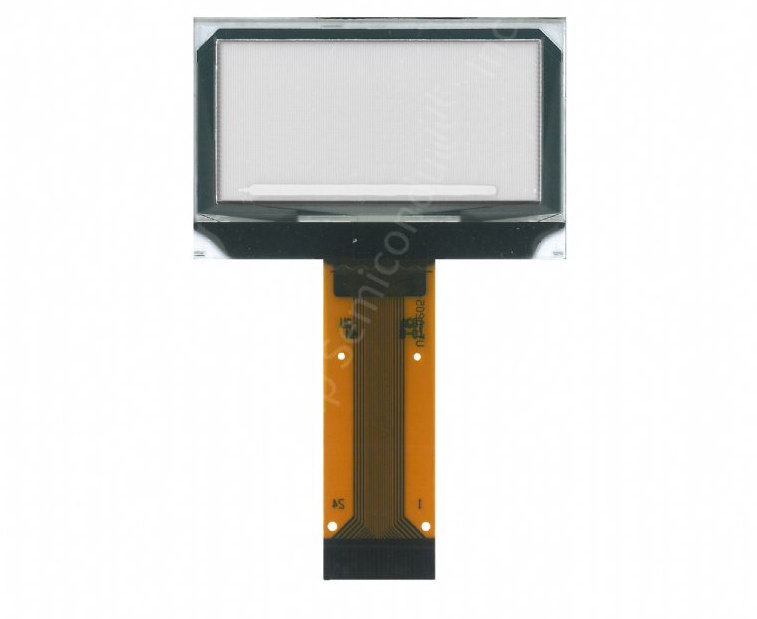 WiseChip Semiconductor Inc (WSI) was established in 2005 in Taiwan. The company develops and produces PMOLED displays. In 2009 WiseChip acquired fellow PMOLED maker Univision.
WiseChip Semiconductor Inc (WSI) was established in 2005 in Taiwan. The company develops and produces PMOLED displays. In 2009 WiseChip acquired fellow PMOLED maker Univision.
Wisechip says it's the world's second largest PMOLED maker, and the company now enjoys a surge in PMOLED demand (we hear the same from other PMOLED makers). The company currently offers glass-based PMOLEDs ranging from 0.33" to 5.5", flexible displays, TADF/HF displays and more.
In May 2020 we posted an interview with Wisechip's VP of R&D.
8 Kebei road
Chunan
Taiwan
Wisechip announces its second TADF/HF PMOLED device
PMOLED display maker Wisechip has launched its second TADF/HF OLED display, a 5.5" 256x64 yellow PMOLED device. The company says that by using Kyulux's Hyperfluoresence™ OLED technology it offers double the brightness compared to its standard OLEDs.
Wisechip is the first and only company to commercialize TADF/HF device. The company's first device was launched in 2020, a 2.7" yellow PMOLED.
Wisechip demonstrates a new miniature PMOLED-based near-eye display
Wisechip has unveiled a new miniature near-eye display module that is based on a small PMOLED display. The company says that this cost-effective solution offers high-contrast and low-power, and can be used for rapid development and applications that only require a simple information display.
The display module combines a 0.19" monochrome (white) PMOLED display, and a small optical system. Wisechip says that the whole module can work up to 20 hours powered by a 70mAh lithium battery.
A Q&A with Dr. York Tsai, Wisechip's Vice President of R&D
WiseChip Semiconductor, based in Taiwan, is one of the world's leading PMOLED maker (in fact in 2015 Wisechip said it's the world's second largest). Wisechip is developing next-generation PMOLED displays, including flexible panels, transparent panels and Hyperfluorescence/TADF PMOLEDs.

WiseChip recently announced its first, and the world’s first, Hyperfluorescence display, using TADF materials provided by Kyulux. Can you tell some more about this display and its properties?
This 2.70 128x64 product is adopted mostly in industrial products. The size matters in such market but the main problem was to increase the brightness due to the limited efficiency of the fluorescence emitters. The Hyperfluorescence technology helps to settle the problem and can reach up 2.5 times brighter. It performs much better readability so users do not have to stand right in front of the device. This feature adds to the value of the end product.
Kyulux announces first shipment of OLED TADF emitters to Wisechip
TADF emitter developer Kyulux announced that it has shipped the first batch of its yellow TADF emitter to Taiwan's Wisechip to be used it the world's first TADF / Hyperfluorescence display, the 2.7" PMOLED announced in October 2019 - which means that the display will likely start to ship soon.

Wisechip's first HF PMOLED is a 2.7" 128x64 monochrome yellow display, that reaches a brightness of 220 nits - 2.5 times brighter than Wisechip's fluorescent yellow PMOLED. The lifetime of this display is 50,000 hours. Wisechip says this display is aimed for the medical, industrial and electronic products markets, and in the future it will launch TADF/HF PMOLEDs for the wearable and consumer electronics markets as well.
Wisechip launches the world's first Hyperfluoresence OLED display - a 2.7" yellow PMOLED
Wisechip announced that it launched the world's first Hyperfluorescence OLED display - a 2.7" monochrome yellow 128x64 PMOLED. The brightness of this display reaches 220 nits - which is 2.5 times the brightness of Wisechip's fluorescent yellow PMOLED. The lifetime of this display is 50,000 hours.

Hyperfluorescence OLED emitters represent the 4th-generation of OLED emitter systems. HF is an actually a system that combines fluorescence emitters (1st-gen) with TADF (3rd-gen) hosts - to achieve a high efficiency , long lifetimes and narrow-spectrum emission.
Wisechip's new 1.51" transparent PMOLED is available on the OLED Marketplace
Wisechip recently started shipping a new dot-matrix transparent PMOLED (1.51" 128x56, light-blue) and the display is now available on the OLED Marketplace. It's been many years since a standard dot-matrix transparent OLED was available, so this is great news.
If you are interested in this transparent display for your device or new project, contact us now, or check out more information over at the OLED Marketplace.
Kyulux's CEO shares company updates at OLED Korea 2019
In June 2018 Kyulux and Wisechip unveiled a PMOLED display that uses Kyulux’s Hyperfluorescence yellow emitter. Kyulux updated today that Wisechip is now ready to start producing the HF panel and is seeking customers.
Wisechip eventually settled on a large panel - 73.00 x 41.86 mm (2.7") with a resolution of 128x64. Wisechip says that the power consumption of its HF display is almost half of its regular fluorescent yellow PMOLED.
Where are the transparent OLEDs?
Transparent displays are of great interest, and many envision a plethora of possible applications that use transparent screens in the retail, commercial and consumer markets. There are many exciting applications - but none with real and immediate demand.
Many OLED makers are developing transparent OLEDs, and in the past we've seen several producers that introduced such displays to the market - only to halt production a few months later. Device makers are on the lookout for such displays, and are still disappointed even though the technology is ready.
Wisechip and Kyulux to bring a flexible TADF/HF PMOLED to the market by the end of 2018
Kyulux and Wisechip unveiled a flexible PMOLED display that uses Kyulux’s Hyperfluoresence yellow emitter. Wisechip says that the power consumption of this display is almost half of Wisechip's regular fluorescent yellow PMOLED.

The first flexible HF PMOLED is a 1.71" 256x64 display, that is now ready to be produced (Wisechip says this will enter mass production before the end of 2018). Wisechip originally aimed to introduce its first glass-based HF yellow emitter PMOLED by the end of 2017, but it seems they decided to jump straight to a flexible panel.
Wisechip to produce in-cell touch PMOLED displays by the end of 2017
Taiwan-based PMOLED developer Wisechip announced plans to start mass producing In-Cell Touch PMOLED displays in Q4 2017. Wisechip says that its 1-inch ICT PMOLED will be cheaper by about $1 compared to current touch PMOLEDs, and will also be thinner and lighter.

An In-Cell Touch display has the touch layer embedded within the panel itself. There's no need to laminate a separate touch layer. Wisechip said that it developed an enhanced manufacturing process and new technologies that were required for the In-Cell layer addition.
Pagination
- Page 1
- Next page



